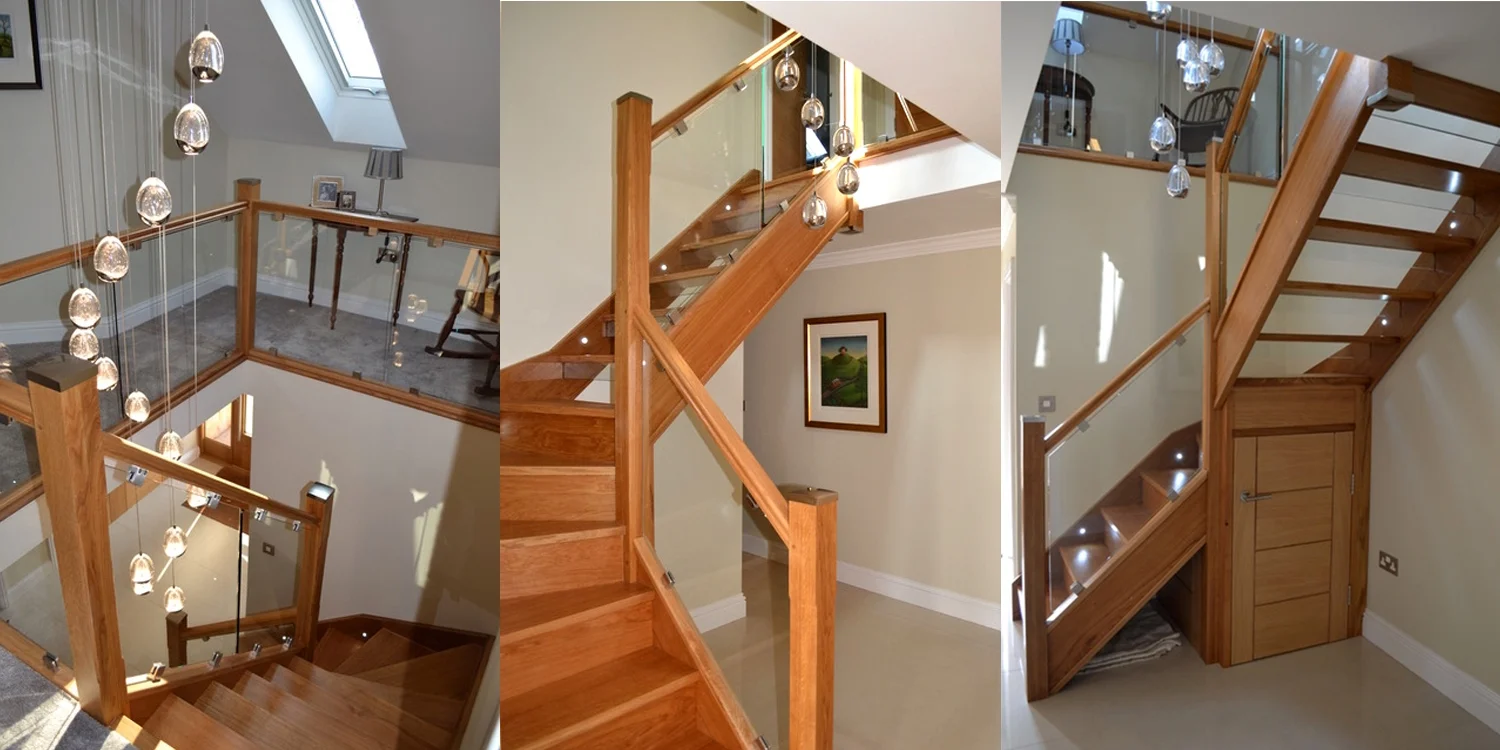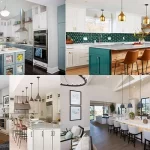Stair paneling, traditionally a subtle element in home design, is now emerging as a key trend in interior decoration. This resurgence is driven by a desire to transform ordinary staircases into captivating design statements. Modern stair paneling goes beyond mere functionality, offering a unique blend of aesthetic appeal and personal style. As homeowners seek ways to personalize their spaces, stair paneling provides an innovative solution. It enhances the architectural charm, adding a distinctive character to homes. This renewed interest in stair paneling marks a shift towards more thoughtful and stylish interior design choices.
The Evolution of Stair Paneling
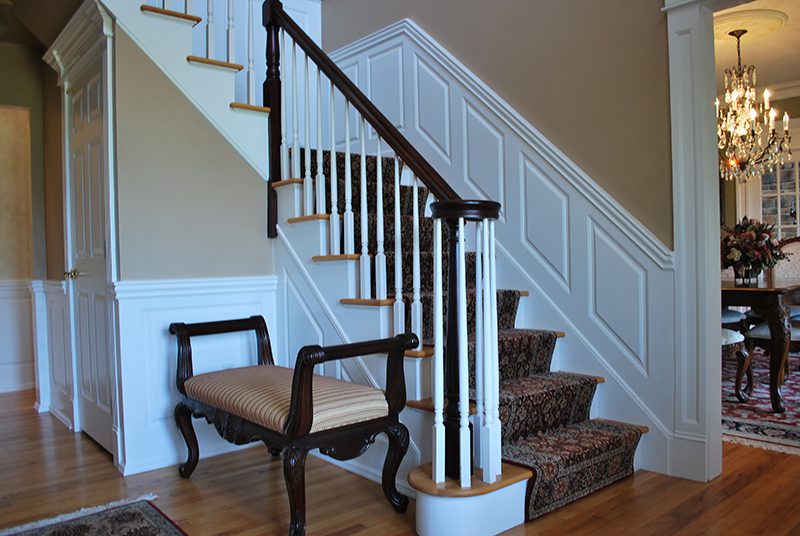
Historically, stair paneling was a mark of luxury in grand estates, symbolizing status and craftsmanship. Over time, it evolved into a versatile design element, accessible across various architectural styles. This evolution reflects changing tastes and technologies, transitioning from ornate, hand-carved woodwork to diverse materials and simpler lines, catering to both traditional and modern aesthetics. Today’s stair paneling blends historical richness with contemporary design sensibilities.
Choosing the Right Material
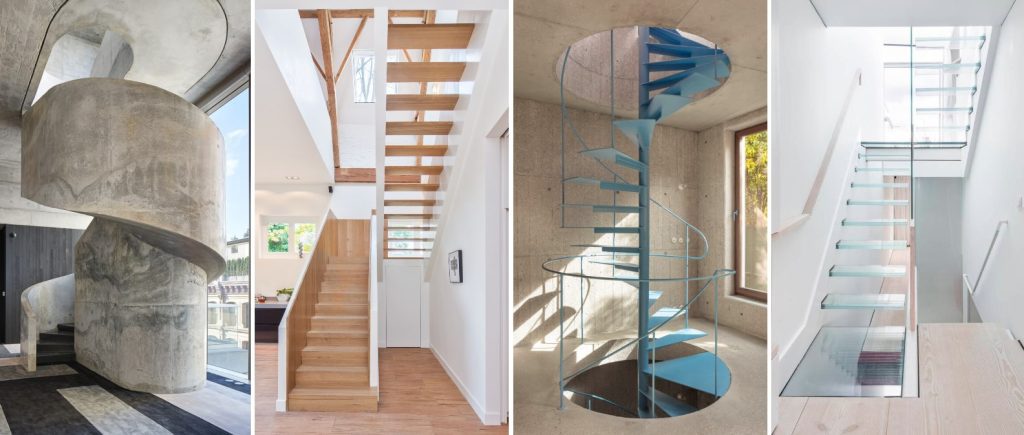
| Material | Durability | Style | Best For |
|---|---|---|---|
| Solid Wood | High durability, lasting for decades | Classic, timeless appeal; can be crafted into various designs | Traditional or rustic homes; those looking for a long-term investment |
| Medium Density Fiberboard (MDF) | Moderate durability; less prone to warping | Smooth, even surface; easily paintable for custom looks | Budget-conscious projects; modern interiors where paint and finishes are emphasized |
| Veneer | Good durability when well-maintained | Mimics real wood at a lower cost; versatile for different styles | Cost-effective projects; achieving a wood look without the expense |
| Plywood | Good strength and durability | Offers a more industrial, minimalistic look | Contemporary homes; spaces where a simple, understated aesthetic is desired |
| Glass | High durability; resistant to decay | Sleek, modern and open feel; enhances natural light | Modern or minimalist homes; spaces where maintaining an open, airy feel is important |
| Metal | Extremely durable; resistant to pests | Can range from industrial to elegant; often used for modern designs | Contemporary homes; outdoor or high-traffic staircases |
| Composite Materials | Varies depending on the composition; generally good durability | Can be designed to mimic other materials; often used in modern design | Eco-friendly projects; homes that require low maintenance options |
| Reclaimed Wood | Varies, but often highly durable with proper care | Rustic, eco-friendly, with a unique historical charm | Environmentally conscious homes; spaces where each element has a story |
Paneling Styles From Traditional to Modern
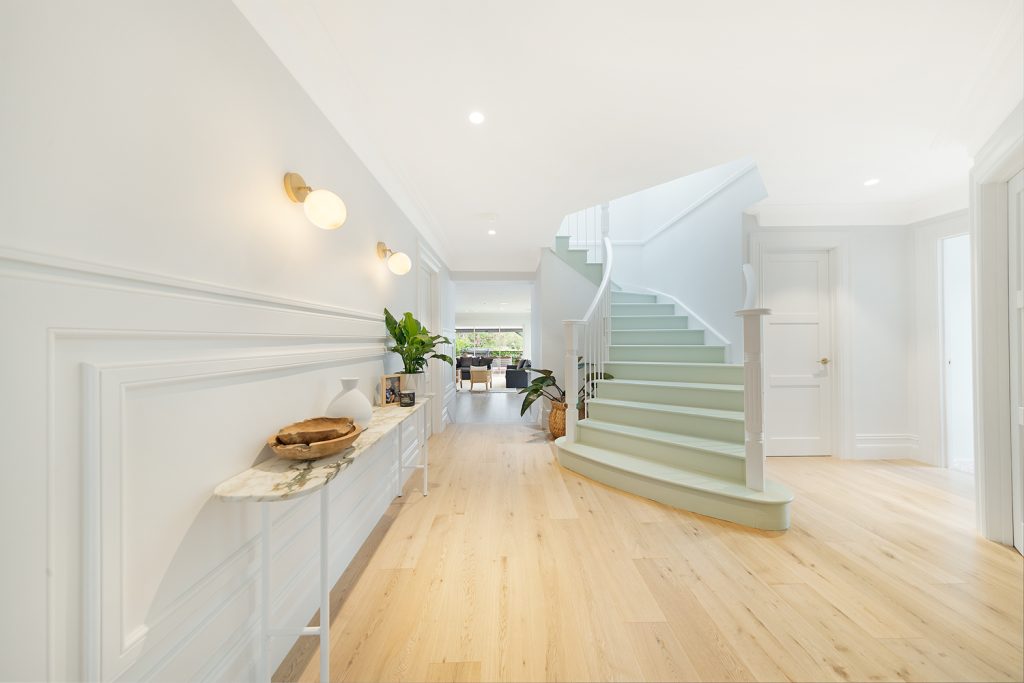
Traditional Elegance: Timeless Designs
Traditional elegance in stair paneling is all about designs that never go out of style and make your home feel grand and full of history. This style often uses rich, warm wood colors, detailed carvings, and fancy moldings that remind you of classic buildings. It’s perfect for homes that want to feel historical or classic, creating a cozy and welcoming vibe. These designs show off the crafters’ skills and make your staircase the star of the show with beauty that lasts.
Modern Minimalism: Sleek and Simple
Modern minimalism in stair paneling is about simple, sleek designs that are contemporary and elegant. This style uses clean lines, simple shapes, and neutral colors, often with glass, metal, or smooth wood. It’s great for homes with a modern or futuristic look, making the space open and bright. This type of stair design is eye-catching but not too flashy, fitting right in with minimalist decorating.
Rustic Charm: Bringing Nature Indoors
Rustic charm in stair paneling brings the feel of nature into your home, giving it an organic and earthy touch. This style usually features natural materials like recycled wood, rough textures, and warm, earthy colors. It makes your home feel cozy and comfortable, perfect for country, farmhouse, or cottage-style homes. Rustic stair paneling adds a unique, homey, inviting feel to any living space by using elements that remind you of the outdoors.
Painted Perfection: A Pop of Color
Painted perfection in stair paneling adds a bright pop of color, turning staircases into bold, eye-catching features. This style lets you choose from various colors, from bright and fun to sophisticated and subtle. It’s perfect for anyone who wants to add personality and energy to their space. Painted paneling can also match or contrast with the overall color scheme of your home, making it a flexible choice for any interior design style.
Creative Combinations: Mixing Materials
Creative combinations in stair paneling mix different materials to create a unique and innovative look. This style might combine wood with metal accents, glass panels with stone steps, or use unusual materials like acrylic or tiles. It’s great for people who want a custom, one-of-a-kind look that breaks away from the usual styles. This approach lets you express your taste and tie together different parts of your home’s interior, showing off a mix of textures and styles.
DIY or Professional Installation: What to Choose?
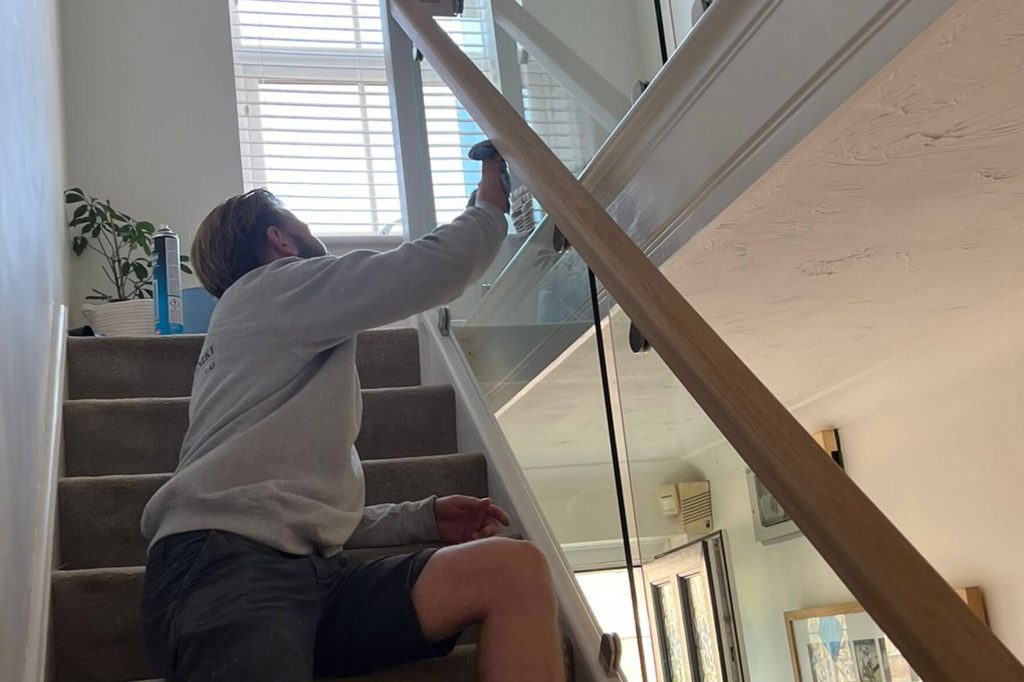
DIY Installation:
- Cost-Effective: Ideal for those on a tight budget, as it eliminates labor costs.
- Personal Satisfaction: Offers a sense of accomplishment and personalization.
- Flexibility: Allows you to work at your own pace and make adjustments as needed.
- Learning Experience: Provides an opportunity to gain new skills and knowledge in home improvement.
- Suitable for Simple Projects: Best for less complex designs or for those with some carpentry experience.
Professional Installation:
- Expertise and Precision: Professionals bring experience and skill, ensuring high-quality results.
- Time-Saving: A quicker option, as professionals can complete the job efficiently.
- Access to Better Tools: Professionals have the right tools for complex jobs.
- Guarantee of Safety: Ensures that the installation meets safety standards and building codes.
- Stress-Free: Eliminates the worry and effort of doing it yourself.
- Ideal for Complex Designs: Recommended for intricate or custom designs that require a skilled hand.
Keeping Your Panels Pristine
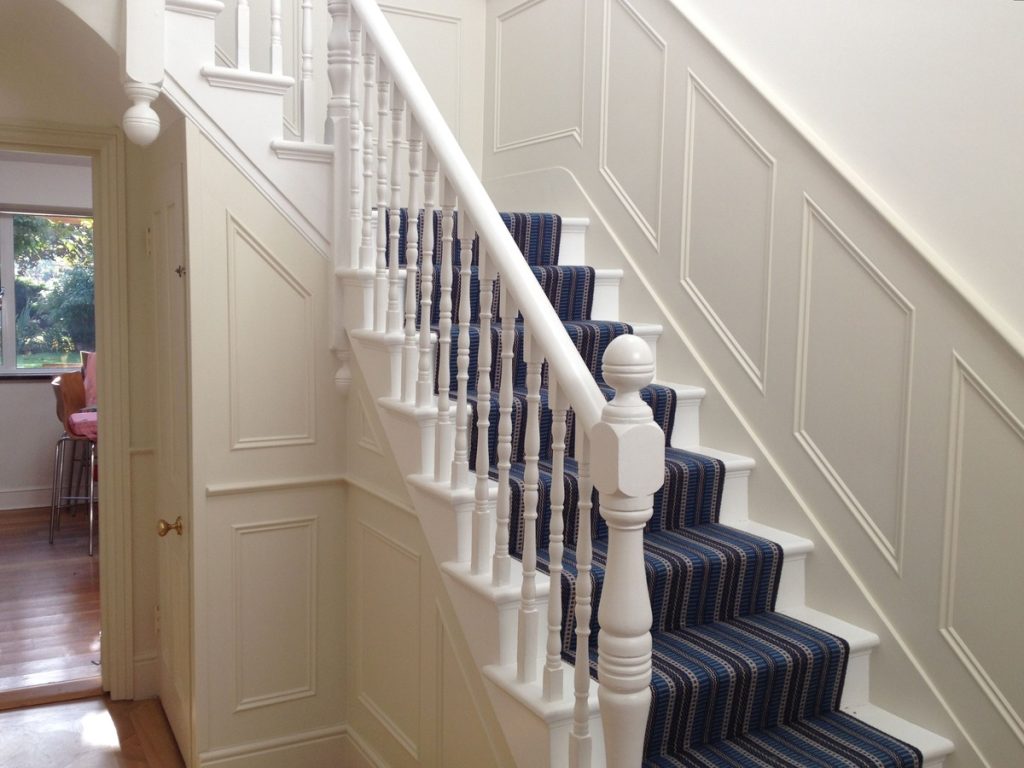
| Material | Maintenance Tips | Cleaning Methods | Longevity Practices |
|---|---|---|---|
| Solid Wood | Regular dusting and occasional polishing | Mild wood cleaner and a soft cloth | Treat with wood conditioner annually; avoid direct sunlight |
| MDF | Frequent dusting to prevent grime build-up | Wipe with a damp cloth; avoid excessive water | Seal edges to prevent moisture absorption |
| Veneer | Gentle cleaning to avoid damage | Use a soft, dry cloth; specific veneer cleaner for stains | Avoid prolonged exposure to heat and moisture |
| Plywood | Regularly check for splinters or peeling | Clean with a dry cloth; mild detergent for stains | Apply a protective sealant every few years |
| Glass | Regular cleaning to avoid fingerprints and smudges | Glass cleaner and a lint-free cloth | Install tempered glass for added durability |
| Metal | Inspect for signs of rust or corrosion | Mild soap and water; metal polish for shine | Apply rust-resistant coatings; keep dry |
| Composite Materials | Minimal maintenance; check for material-specific needs | Use cleaners suitable for the specific composite type | Follow manufacturer guidelines for care and repair |
| Reclaimed Wood | Regular dusting; inspect for wear | Gently clean with a damp cloth; mild wood soap | Treat with natural oils; avoid harsh chemicals |
Balancing Cost and Quality
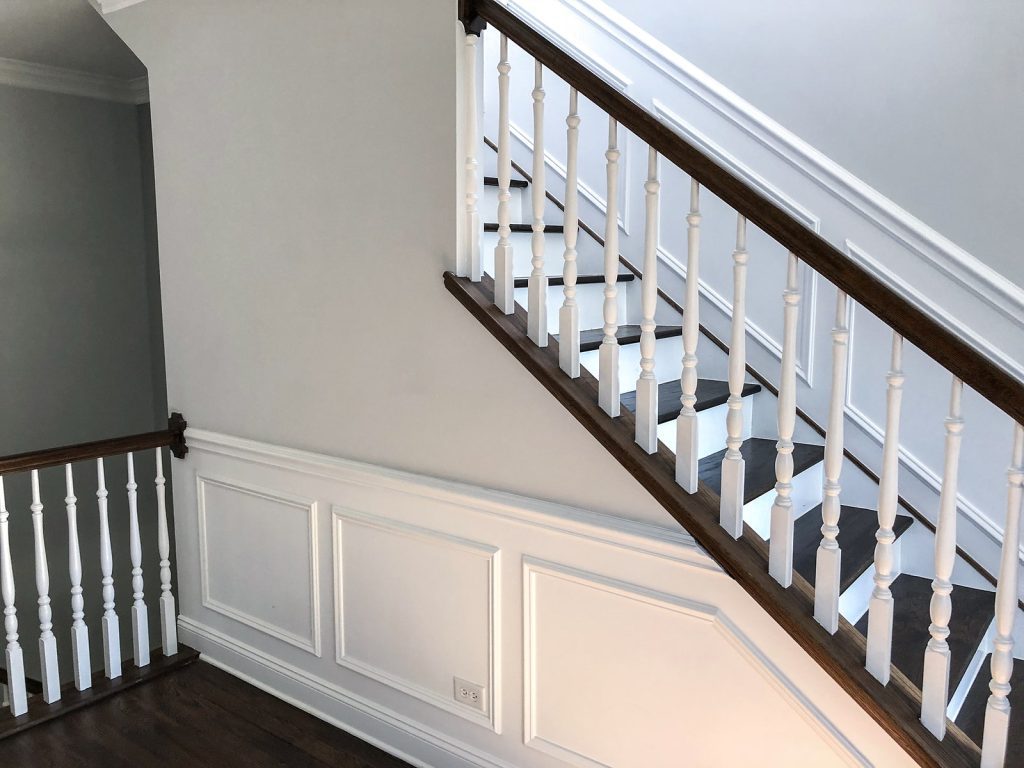
Smart Solutions for Every Budget
For those seeking cost-effective stair paneling solutions, numerous affordable options are available. Medium Density Fiberboard (MDF) stands out as a budget-friendly choice, offering a smooth finish suitable for painting. Veneers provide the appearance of solid wood at a fraction of the cost. Additionally, simple plywood can be creatively used for a more industrial look. These materials allow homeowners to achieve stylish stair paneling without compromising on quality or aesthetics.
When to Spend More
Investing in high-quality stair paneling materials can be a wise decision for long-term value and luxury. Solid wood, known for it’s durability and timeless beauty, is a premier choice for those seeking elegance. Custom-designed panels, whether in exotic woods or incorporating artisanal elements like hand-carvings or inlays, also justify a higher expenditure. These investments not only enhance the aesthetic appeal of your home but also contribute to it’s overall market value.
Adapting Paneling to Various Home Styles
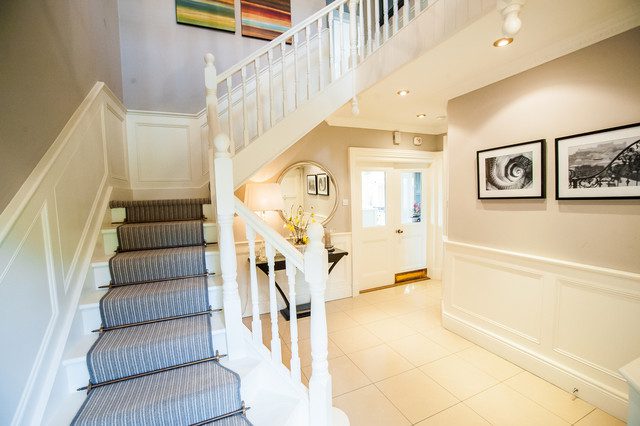
Picking stair paneling that goes well with your home’s style is really important if you want everything to look like it belongs together. For traditional homes, classic wood paneling with detailed moldings fits right in. Modern homes look great with simple, sleek designs using materials like glass or metal. If your home has a rustic feel, reclaimed wood or rough textures will complement it nicely. When you choose paneling that matches your home’s architecture and interior design, your staircase will make the whole space feel even better and more charming.
Versatile Designs for Every Home
Stair paneling comes in lots of different designs to fit any kind of home. Modern homes can try out minimalist and geometric patterns, while classic homes might prefer rich wood colors and fancy carvings. If you like to mix things up, you can combine materials like metal and wood or add colorful painted panels for a unique look. The trick is to balance what you like with the style of your home so that everything looks good together and makes you happy.
Choosing the Right Hue
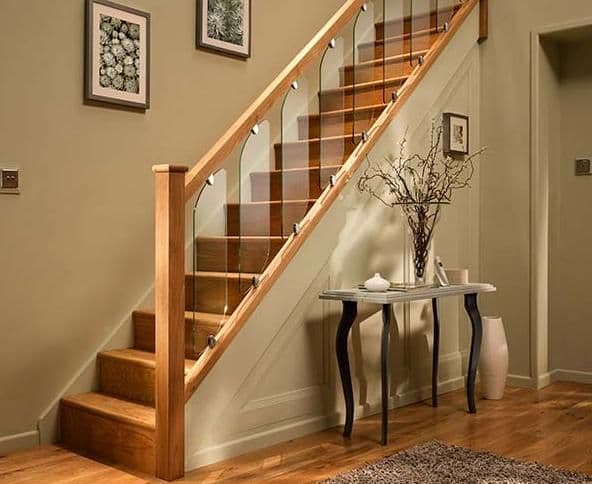
The Power of Color
Color is super important when it comes to stair paneling. It can change the feel of a space. Light colors can make your space look bigger, while dark colors add profound depth and drama. Picking the right color can turn your staircase into a stunning feature that blends in with or stands out from the rest of your home.
Color Coordination Tips
When choosing colors for stair paneling, aim to complement your home’s existing palette. Utilize shades that echo your walls, floors or furnishings for a cohesive look. Consider contrasting colors for a bold statement or subtle tones for a harmonious blend. Remember, the right color balance can enhance your overall interior aesthetic.
Beyond the Ordinary
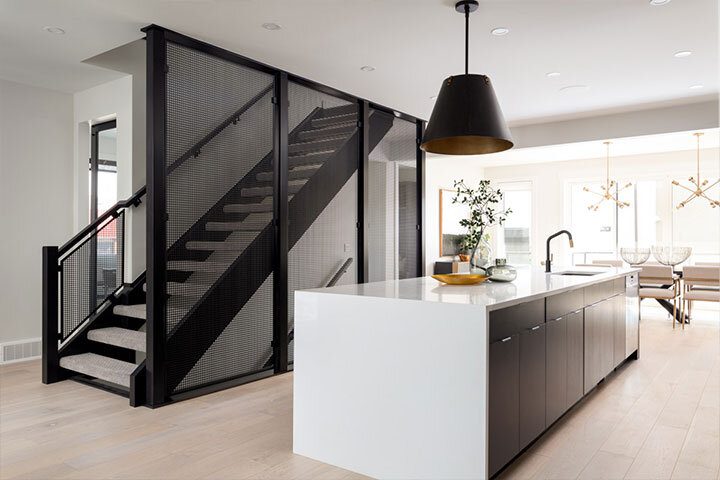
Adding Artistic Flair
Incorporating artistic elements into stair paneling can transform your staircase into a stunning showcase. Consider integrating custom designs like intricate inlays, laser-cut patterns or hand-painted motifs. This approach allows for personal expression and adds a unique, artistic touch to your space. Artistic stair paneling not only elevates the visual appeal of your home but also turns an ordinary staircase into a captivating work of art, reflecting your personal style and creativity.
Integrating Lighting
Integrating lighting into stair paneling is both a functional and aesthetic choice. Strategically placed lights, such as LED strips or small recessed fixtures, can enhance safety by illuminating steps while adding a modern touch. This lighting can accentuate the stairway’s architectural features, create ambiance and transform the space into a visually striking area. Thoughtful lighting integration turns a staircase into a dynamic element of your home’s interior design, blending functionality with style.
A Sensory Experience
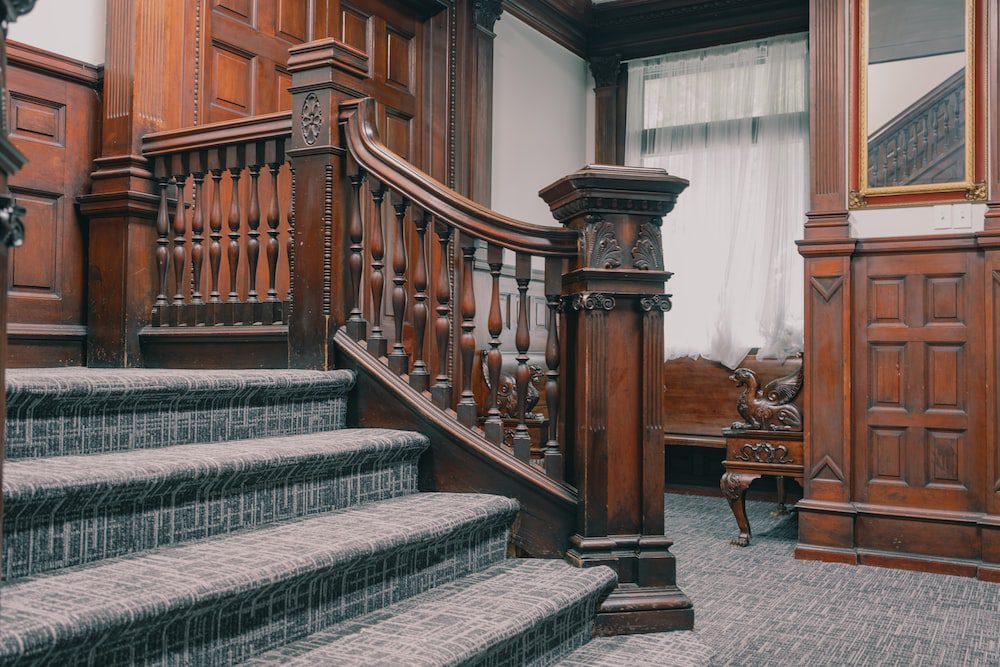
Exploring Textural Elements
Texture adds depth and interest to stair paneling. From smooth, glossy finishes to rough, rustic surfaces, the right texture can elevate the overall design.
Combining Textures for a Unique Look
Don’t be afraid to mix textures. Combining smooth wood with textured stone or metal can create an intriguing visual and tactile experience.
FAQs
The lifespan of stair paneling depends on the material and maintenance. Solid wood and metal can last decades with proper care, while MDF and veneer may have a shorter lifespan.
Yes, many stair paneling materials are durable and can withstand the wear and tear from children and pets. Opt for scratch-resistant and easy-to-clean materials like hardwood or metal.
Absolutely. Stair paneling can be custom-made to fit the specific dimensions and style of any staircase, ensuring a seamless and tailored look.
The cost varies widely based on materials, design complexity and installation. Budget options like MDF or veneer are more affordable, while solid wood and custom designs are higher-end choices.
It depends on the terms of your lease and the type of paneling. Temporary solutions or those that don’t require structural changes might be suitable for rentals.
Maintenance varies by material. Wood may need polishing and conditioning, while metal might require occasional rust-proofing. Regular cleaning is generally recommended for all types.
Quality stair paneling can enhance the aesthetic appeal of your home, potentially increasing it’s market value, especially if it complements the overall design of the house.
Conclusion
Stair paneling can greatly improve the look and function of your home. Whether you want a small change or a big transformation, the right paneling can make a big difference. Think carefully about materials, styles, and safety standards. Stair paneling is versatile and can really change the feel of your space. Remember, your staircase is more than just a way to get from one floor to another – it’s a chance to show off your unique style and add charm to your home.


